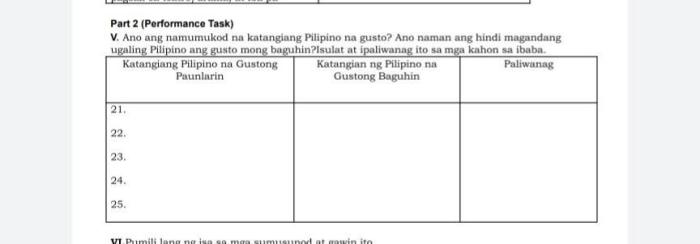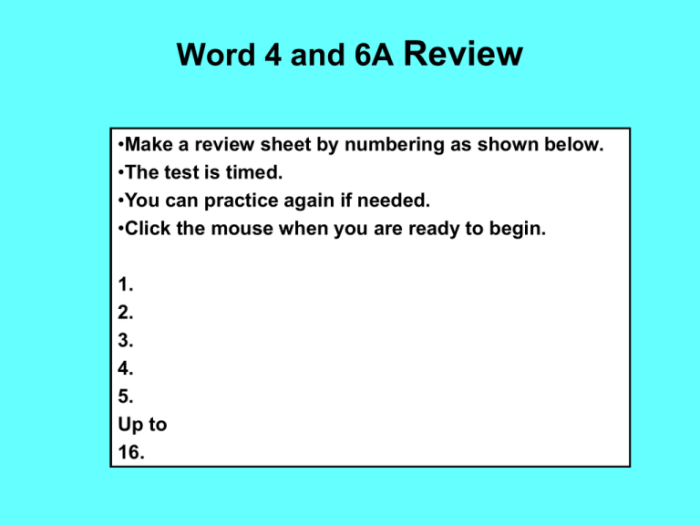Gramatica a level 3 pp 37-41 answers – Delving into the intricacies of Gramatica A Level 3, this comprehensive guide unravels the fundamental concepts and structures covered in Unit 3, Pages 37-41. Embark on a journey to master key grammatical structures, explore various tenses and aspects, delve into the nuances of conditional sentences, unravel the functionality of modal verbs, and navigate the intricacies of reported speech.
This guide provides a comprehensive overview of the key vocabulary and collocations, equipping you with the essential building blocks for effective communication. With clear explanations, illustrative examples, and practical insights, this guide empowers you to navigate the complexities of Gramatica A Level 3 with confidence and proficiency.
Key Concepts and Structures in Gramatica A Level 3

Unit 3, pages 37-41 of Gramatica A Level 3, delve into the intricacies of Spanish grammar, introducing fundamental concepts and structures that are crucial for developing proficiency in the language. This section lays the groundwork for understanding the complexities of Spanish grammar, providing a solid foundation for further language acquisition.
The key grammatical structures and rules covered in this unit include:
- The use of the definite and indefinite articles
- The formation and use of possessive adjectives
- The conjugation of regular and irregular verbs in the present tense
- The use of personal pronouns
- The formation and use of interrogative and negative sentences
These structures are essential for constructing meaningful sentences and communicating effectively in Spanish. By mastering these concepts, students will gain a deeper understanding of the language’s grammatical framework and enhance their ability to express themselves clearly and accurately.
Definite and Indefinite Articles
Definite and indefinite articles are used to specify or generalize nouns, respectively. In Spanish, the definite articles are “el” (masculine singular), “la” (feminine singular), “los” (masculine plural), and “las” (feminine plural). The indefinite articles are “un” (masculine singular), “una” (feminine singular), “unos” (masculine plural), and “unas” (feminine plural).
For example:
El libro es interesante. (The book is interesting.)
Una casa grande. (A big house.)
Possessive Adjectives
Possessive adjectives indicate ownership or possession of a noun. In Spanish, possessive adjectives agree in gender and number with the noun they modify.
For example:
Mi libro (my book)
Tu casa (your house)
Present Tense Conjugation
The present tense is used to describe actions or states that are happening now or that are habitual. In Spanish, regular verbs are conjugated by adding the appropriate ending to the verb stem, while irregular verbs have unique conjugations that must be memorized.
For example:
Hablar (to speak): yo hablo, tú hablas, él/ella habla, nosotros hablamos, vosotros habláis, ellos/ellas hablan
Ser (to be): yo soy, tú eres, él/ella es, nosotros somos, vosotros sois, ellos/ellas son
Personal Pronouns
Personal pronouns replace nouns and indicate the person or thing that is performing an action or being described. In Spanish, personal pronouns have different forms for each person and number.
For example:
Yo (I)
Tú (you)
Él/Ella (he/she)
Interrogative and Negative Sentences
Interrogative sentences are used to ask questions, while negative sentences express negation or denial. In Spanish, interrogative sentences are formed by inverting the subject and verb, or by adding an interrogative word such as “qué” (what) or “quién” (who).
Negative sentences are formed by adding “no” before the verb.
For example:
¿Qué libro lees? (What book are you reading?)
No hablo español. (I don’t speak Spanish.)
Tenses and Aspects
Tenses and aspects are grammatical concepts that describe the time and manner in which an action or event occurs. They provide a framework for understanding the temporal relationships between events and the speaker’s perspective on those events.
Present Simple Tense
The present simple tense is used to describe habitual actions, general truths, and states of being that are currently true. It is formed by using the base form of the verb without any inflection.
Example: “She goes to the gym every day.”
Present Continuous Tense
The present continuous tense is used to describe actions or events that are happening at the time of speaking or that are in progress over a period of time. It is formed by using the auxiliary verb “to be” followed by the present participle of the main verb.
Example: “He is reading a book.”
Present Perfect Tense
The present perfect tense is used to describe actions or events that began in the past and continue up to the present time. It is formed by using the auxiliary verb “to have” followed by the past participle of the main verb.
Example: “I have lived here for five years.”
Past Simple Tense
The past simple tense is used to describe completed actions or events that happened at a specific time in the past. It is formed by using the past tense form of the verb.
Example: “She went to the store yesterday.”
Past Continuous Tense
The past continuous tense is used to describe actions or events that were in progress at a specific time in the past. It is formed by using the auxiliary verb “to be” followed by the past participle of the main verb.
Example: “He was playing soccer when I arrived.”
Past Perfect Tense
The past perfect tense is used to describe actions or events that had already happened before another action or event in the past. It is formed by using the auxiliary verb “to have” followed by the past participle of the main verb.
Example: “She had already finished her homework before I came home.”
Future Simple Tense
The future simple tense is used to describe actions or events that will happen in the future. It is formed by using the auxiliary verb “will” followed by the base form of the main verb.
Example: “I will go to the movies tomorrow.”
Future Continuous Tense
The future continuous tense is used to describe actions or events that will be in progress at a specific time in the future. It is formed by using the auxiliary verb “will be” followed by the present participle of the main verb.
Example: “He will be working at the office tomorrow afternoon.”
Future Perfect Tense
The future perfect tense is used to describe actions or events that will have been completed before another action or event in the future. It is formed by using the auxiliary verb “will have” followed by the past participle of the main verb.
Example: “She will have finished her project by the end of the week.”
Conditional Sentences
Conditional sentences express the relationship between two events or situations, one of which is contingent upon the other. The text covers three main types of conditional sentences, each with its own rules for formation and usage.
Type 1: Real Conditional
- Expresses a possible or probable condition and its likely result.
- Formula:If + present simple, will + infinitive
- Example:If you study hard, you will pass the exam.
Type 2: Unreal Conditional
- Expresses an unlikely or impossible condition and its hypothetical result.
- Formula:If + past simple, would + infinitive
- Example:If I had a million dollars, I would travel the world.
Type 3: Mixed Conditional
- Expresses a hypothetical condition in the past and its hypothetical result in the present.
- Formula:If + past perfect, would have + past participle
- Example:If I had studied harder, I would have passed the exam.
Modal Verbs

Modal verbs are auxiliary verbs that express possibility, necessity, permission, advice, or ability. They are used together with the main verb of the sentence and can change the meaning of the sentence.
The modal verbs introduced in the text are can, could, may, might, must, should, and will.
Can, Gramatica a level 3 pp 37-41 answers
Canis used to express ability, permission, or possibility.
- Ability:I can speak Spanish.
- Permission:Can I borrow your car?
- Possibility:It can rain tomorrow.
Could
Couldis used to express possibility, suggestion, or polite request.
- Possibility:It could be true.
- Suggestion:Could you please pass the salt?
- Polite request:Could you help me with this?
May
Mayis used to express permission, possibility, or advice.
- Permission:You may leave now.
- Possibility:It may be cold tomorrow.
- Advice:You may want to consider your options.
Might
Mightis used to express possibility or uncertainty.
- Possibility:It might rain tomorrow.
- Uncertainty:I’m not sure, but I might be able to help you.
Must
Mustis used to express necessity or obligation.
- Necessity:You must study for your exam.
- Obligation:I must go to work.
Should
Shouldis used to express advice, obligation, or expectation.
- Advice:You should see a doctor.
- Obligation:You should do your homework.
- Expectation:You should be here by 9:00.
Will
Willis used to express intention, prediction, or habit.
- Intention:I will study for my exam.
- Prediction:It will rain tomorrow.
- Habit:I always get up at 6:00.
Reported Speech

Reported speech involves relaying what someone said without using their exact words. It is used to convey information, ideas, or opinions expressed by others. There are three main types of reported speech: direct, indirect, and reported questions.
Direct Speech
Direct speech is the verbatim repetition of what someone said. It is enclosed in quotation marks and uses the speaker’s original words.
Example:
“I am going to the store,” she said.
Indirect Speech
Indirect speech reports what someone said without using their exact words. It uses a reporting verb (e.g., said, told, asked) and changes the pronouns, tenses, and adverbs to match the perspective of the reporter.
Example:
She said that she was going to the store.
Reported Questions
Reported questions are used to report questions asked by others. They follow the same rules as indirect speech, but they use an interrogative word (e.g., who, what, where) to indicate the question.
Example:
She asked where I was going.
Vocabulary and Collocations: Gramatica A Level 3 Pp 37-41 Answers
The text introduces a range of key vocabulary and collocations related to various topics. These terms and phrases are essential for understanding the content and expressing ideas effectively.
Key Vocabulary
-
-*Collocation
A combination of words that frequently occur together and have a specific meaning.
-*Lexical set
A group of words that share a semantic field, such as words related to emotions, food, or clothing.
-*Idiom
A phrase or expression with a figurative meaning that cannot be understood from the literal meaning of its individual words.
Usage and Examples
-*Collocations
“take place” (instead of “happen”)
“make a decision” (instead of “decide”)
- “pay attention” (instead of “listen”)
-*Lexical sets
Emotions
joy, sadness, anger, fear
Food
bread, cheese, meat, vegetables
Clothing
shirt, pants, dress, jacket
-*Idioms
“break a leg” (wish someone good luck)
“spill the beans” (reveal a secret)
“kick the bucket” (die)
Commonly Asked Questions
What are the key grammatical structures covered in Gramatica A Level 3, Unit 3, Pages 37-41?
The key grammatical structures covered in this section include the present perfect tense, past perfect tense, future perfect tense, conditional sentences, modal verbs, and reported speech.
How do I form and use conditional sentences correctly?
Conditional sentences express the relationship between a condition and a result. There are three main types of conditional sentences: the first conditional, the second conditional, and the third conditional. Each type has its own rules for forming and using the sentence.
What is the function of modal verbs?
Modal verbs are used to express possibility, necessity, permission, and advice. They are always followed by the infinitive form of the main verb.